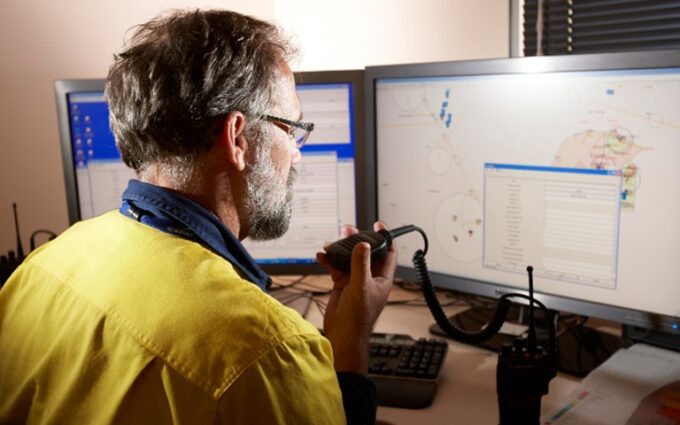Miscommunication is a common result as a field service business manager tries to gain more visibility on the ground. The constant back-and-forth with field service technicians, clients, and field service teams is bound to result in missing out on details.
Scheduling and dispatching are where a majority of miscommunication takes place. This significantly hampers your project outcomes – wastes time, you get angry customers and even hurts your overall brand reputation.
A simple hack to avoid this is to enable real-time communication for your field service business. Read more on how this helps streamline your communication for scheduling and dispatching activities.
What does real-time communication in dispatching mean?

Source: magazine.cim.org
Dispatch software enables you to communicate with your field service technicians, teams, vehicles, vendors, and clients on a real-time basis. This means you can update information about the project, vehicle status, technician location, etc, and the relevant person gets notified immediately.
For example, you can update the location of your field service technician on a map in real-time to your clients. This way, you can understand the time taken by your field service technician, while your client gets an assurance with an estimated time of arrival.
Real-time communication is usually done via text messages, maps, WhatsApp or chat interface, calls, or a dashboard on mobile or desktop.
How do real-time communications help field service teams stay on the same page?

Source: jobcase.com
The key importance of dispatch software is how it centralizes your communication and then helps organize it per your business needs.
Here’s how having real-time communication enabled helps you streamline your communication workflows:
1. Reduce the number of communication rounds to convey information
If you provide the real-time location of your field service technician for a scheduled appointment, your customer need not contact your support team for confirmation. Also, to get the availability of the field service technician, you need not do constant back and forth to get a confirmation.
Too many phone calls or waiting for a reply to an email reduces efficiency drastically. It also causes mental strain on your field service teams to manage responses and wait time. Thus, it’s better to use dispatch software that manages your team’s availabilities and communication with customers.
2. Reduce response time to clients
Reducing response time to clients is crucial to any business that provides field services. Long wait times can lead to customer frustration and negative reviews, ultimately impacting the company’s reputation and bottom line. In this section, we will explore some strategies to reduce response time to clients.
Utilize Dispatch Software
One of the most effective ways to reduce response time to clients is to utilize dispatch software. Dispatch software allows businesses to schedule and dispatch field service technicians more efficiently, saving time and improving overall productivity. With dispatch software, businesses can quickly assign tasks to technicians based on their proximity to the job site, skills, and availability, ensuring that the right technician is dispatched to each job in the shortest possible time.
Offer Faster Response Time
Another strategy to reduce response time to clients is to offer faster response time. Businesses can offer promises such as a ’24-hour response’ or a claim on their website that a technician will be assigned within a certain number of hours. These promises help to set customer expectations and hold the business accountable for delivering services within a specific time frame. However, businesses must ensure they can deliver on these promises consistently; otherwise, it may lead to further customer dissatisfaction.
Streamline Scheduling and Dispatching
Streamlining scheduling and dispatching processes can also help to reduce response time to clients. Businesses can analyze their current processes and identify areas of inefficiency. For example, reducing paperwork and manual entry can help to save time and reduce errors. Similarly, automating communication with customers, such as appointment confirmations and status updates, can help to save time and improve customer satisfaction.
Invest in Training and Technology
Investing in training and technology can help businesses to improve their response time to clients. Providing training to technicians on new technologies, processes, and tools can help to improve their productivity and efficiency. Similarly, investing in new technology, such as mobile devices and field service software, can help technicians to access critical information and complete tasks more quickly, leading to faster response times.
3. Communicate job changes in real-time
Your field service technician is on the way to the job site, but you have an important change to convey. Using dispatch software, you can notify your teams immediately so that they can make changes to their plans accordingly. Sometimes your technician may cancel at the last moment due to an emergency. With real-time communication, your technician can inform you about the change either directly to the client or intimate your teams. The same message is easy to forward to the client.
Such measures improve customer satisfaction as changes are hard to adjust, especially if they are last moment. Dispatch software avoids the negative consequences of job changes.
4. Reduce idle time for field service technicians
Shaky demand for jobs need not result in irregular schedules for your field service technicians. Scheduling and dispatch software enables you to ensure your idle labor is put into job sites as required. A dispatch software reduces bench times and you can work to onboard more clients with the same labor force.
More assigned work also means better retention of labor for your business.
5. Let your team know the progress of a task
For your assigned field service technician, share the updates on the jobs that take place before their job. For example, your labor may require certain materials without which it is difficult for them to start the job. Let them know the real-time status of the material location so that they can get ready accordingly.
Such quick communication of status updates enables stakeholders to make decisions on time, especially in case of emergencies. Your customers also appreciate real-time updates, increasing their satisfaction with your services.
Improve field operations with dispatch software today
It’s important you choose dispatch software that is designed for the field service industry. For this, you may opt for field service management software that includes scheduling and dispatching features.
At Zuper, we enable your field service management efforts with smart workforce management solutions. Book a demo to know how to get started with smart dispatching today.






